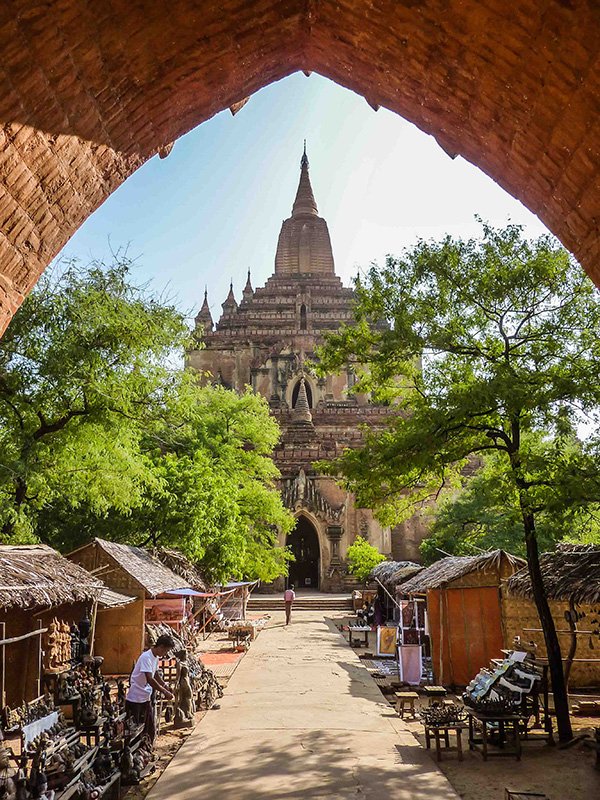Location: 1 miles to the SE of Bagan, beyond the Dhammayangyi Patho.
Close to: Dhammayangyi
Year Built: 1183 AD
Builder: Sitthu II (1174-1211), a major temple builder in Pagan
Ruling monarch: King Narapatisithu
Architectural details: Two staircases are built into the very thick wall going to the upper story and also to the basement of the Sikhara. It is said that the enclosure wall of this temple is the 2nd best in Bagan, having the finest brickwork where a needle cannot find enough space to penetrate the brick joints.
Massive solid core surrounded a corridor with many passages. It is 2 stories.
Renovations: The tower was damaged in the 1975 earthquake (and restored with less than perfect proportions per Stadtner’s account).
Interior Paintings: Many paintings were added in later centuries, mostly the 18th century. Original paintings are visible on the ceilings and porches, corridors and doorway passages. The large paintings of the seated and reclining Buddhas were painted during the Ava period. The 28 Buddhas painting and associated paintings were added on the south interior wall in the 18th century (Aung Kyaing, 2007).
Ogres painted on main doorways could date to painting additions done in the 13th century, but they might also have been done in the 18th century when donors provided new paintings to the corridors and entrance hall (done between 1778-79).
Stucco: Original portions of plaster carvings can still be seen on the arch pediments, frieze and pilasters. Also look for the glazed terracotta flowers in yellow and green. About 40% of the original stucco survives (Stadtner). You can see some of the stucco work on the exterior of the building in the first set of pictures below.
Stories about origination: It is said that King Narapatisithu saw a shining object on the ground on his way to worship at the Turintaung Zedi that his grandfather, Anawrahta, built. The people he sent to investigate this shining object came back to tell him it was fire, but he was determined that it was a small ruby. And so the temple is named, Sula (small) mani (ruby). According to another book, the original name of the temple when it was built is unknown and the name Sulamani originates from chulamani (Pali), meaning the jeweled headdress that Gotama removed from his own head upon leaving the palace when he was 29 years old. Sulamani Guphaya is also referred to as the “Crown Jewel.”
Architectural Details of Sulamani
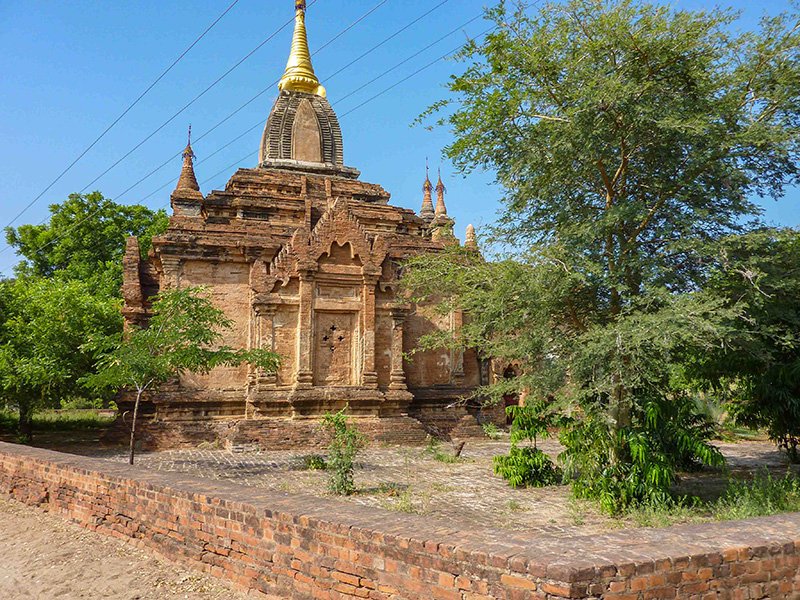
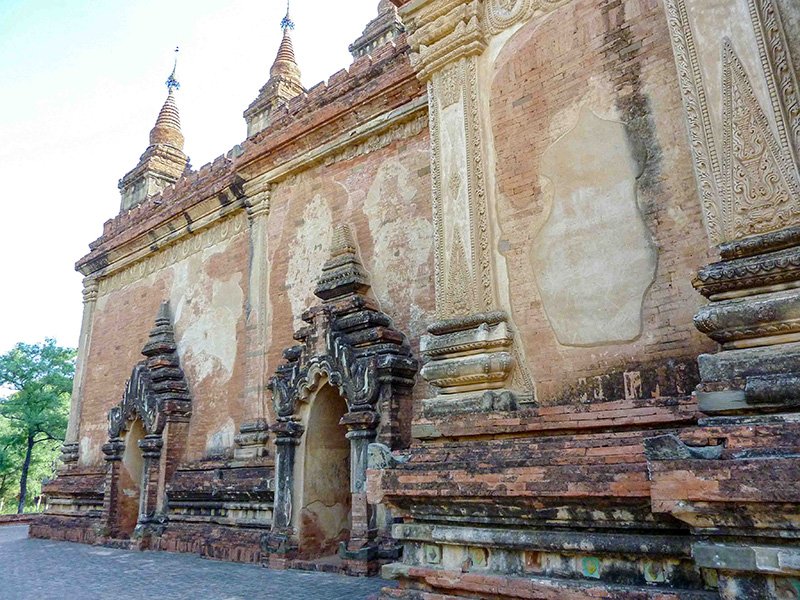
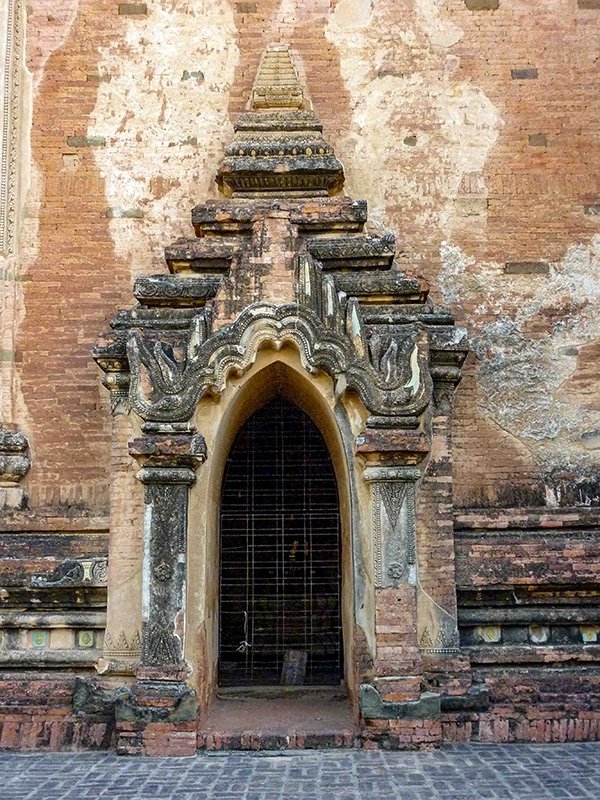

Interior Paintings - Original
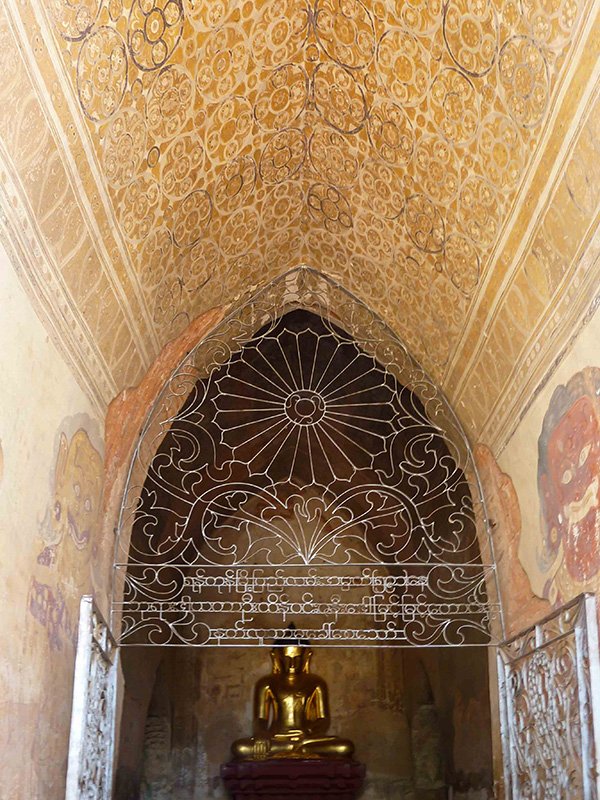
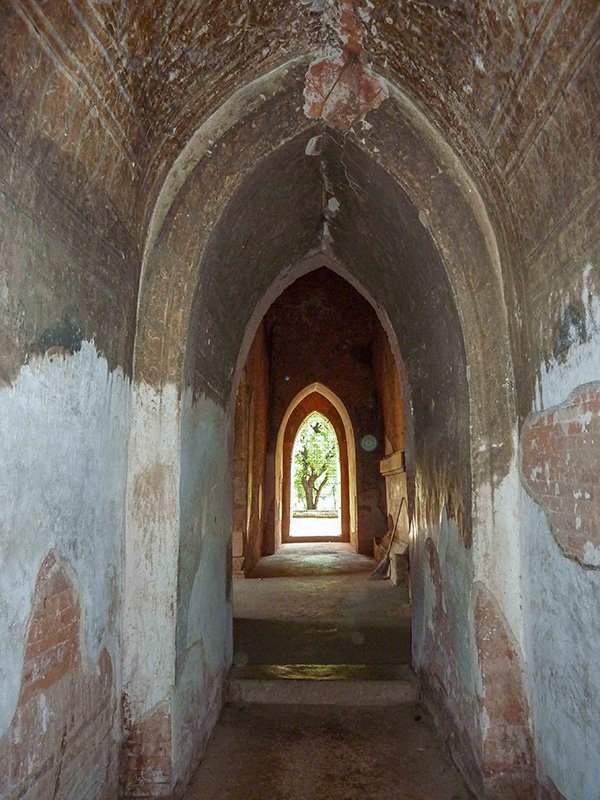
Interior Paintings - 18th century

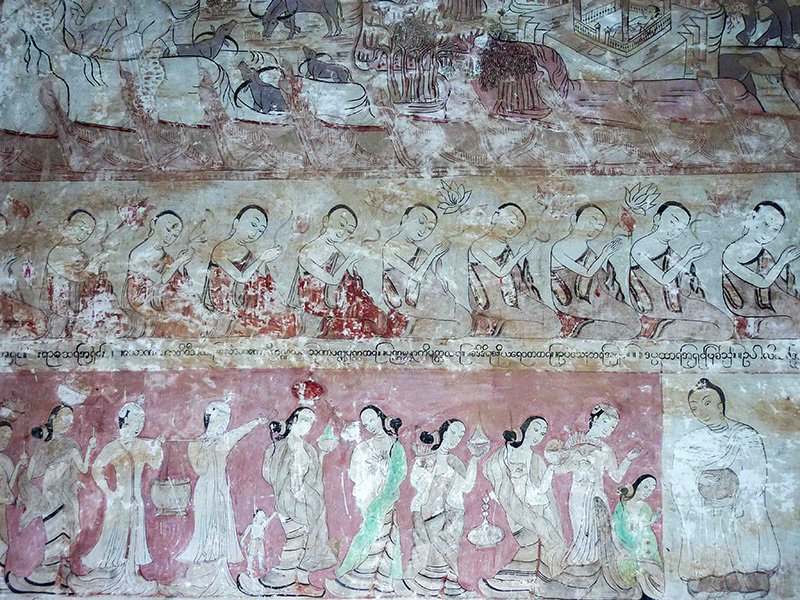
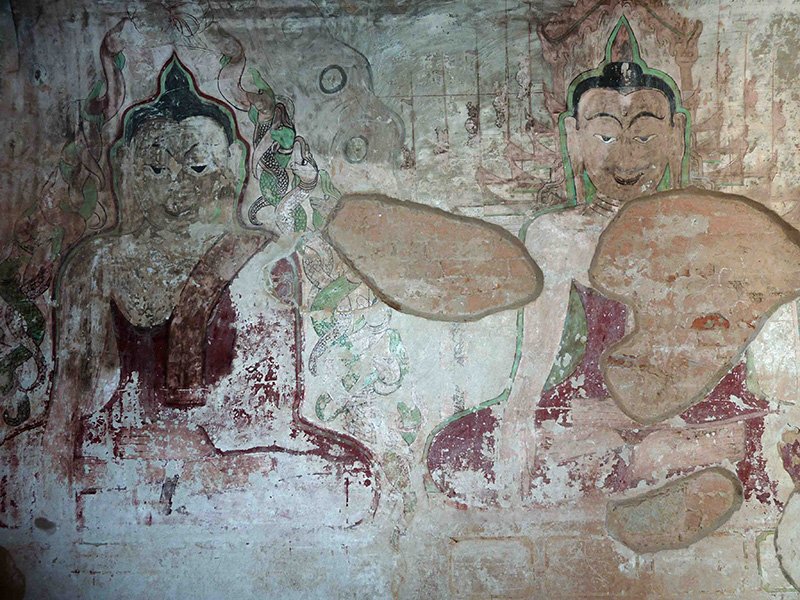
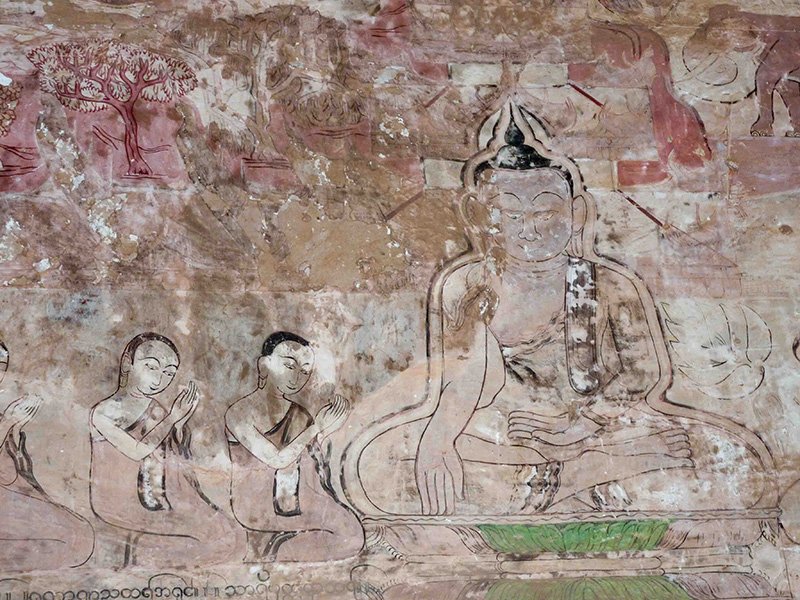

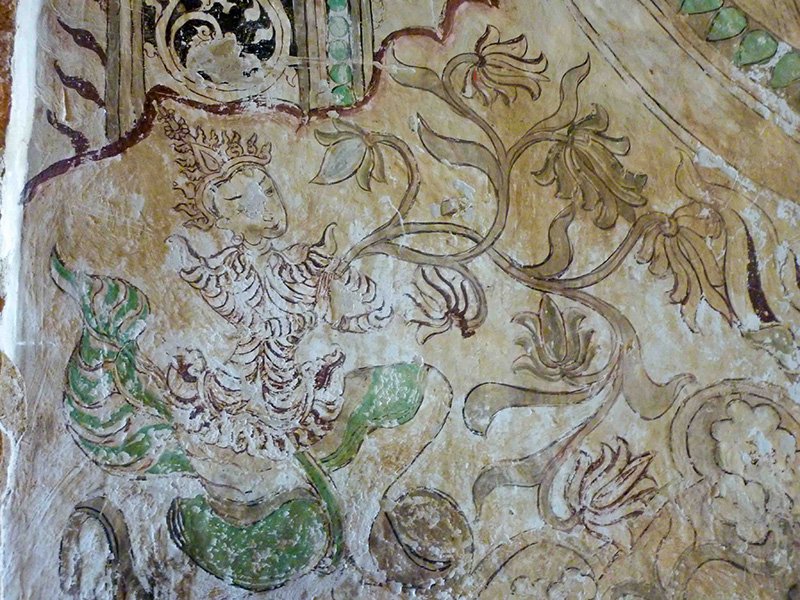
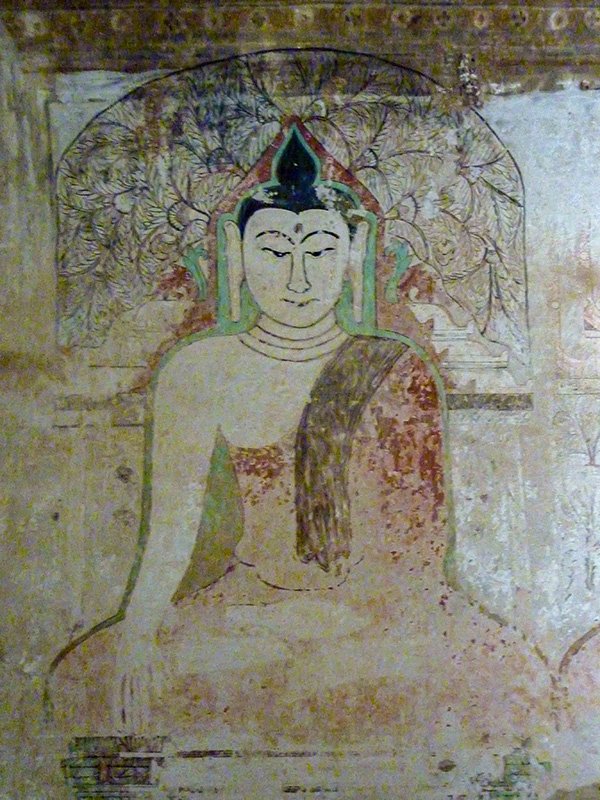
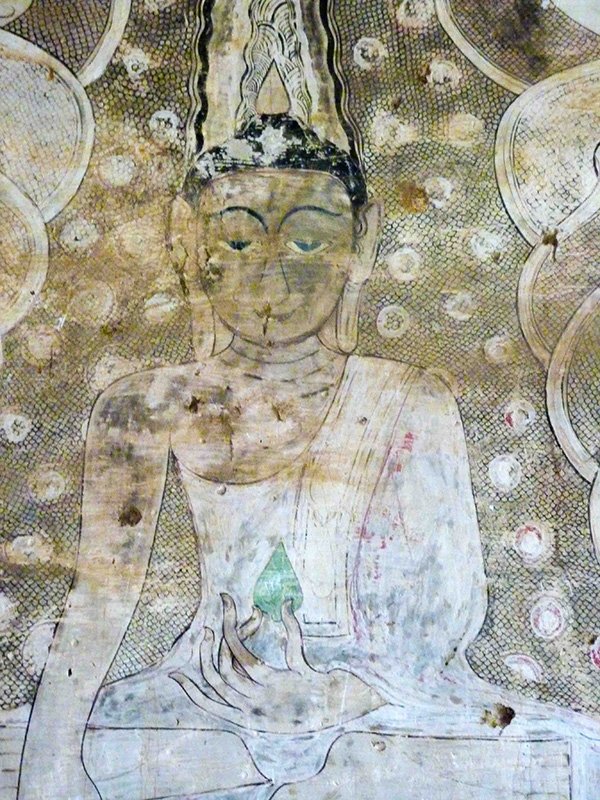
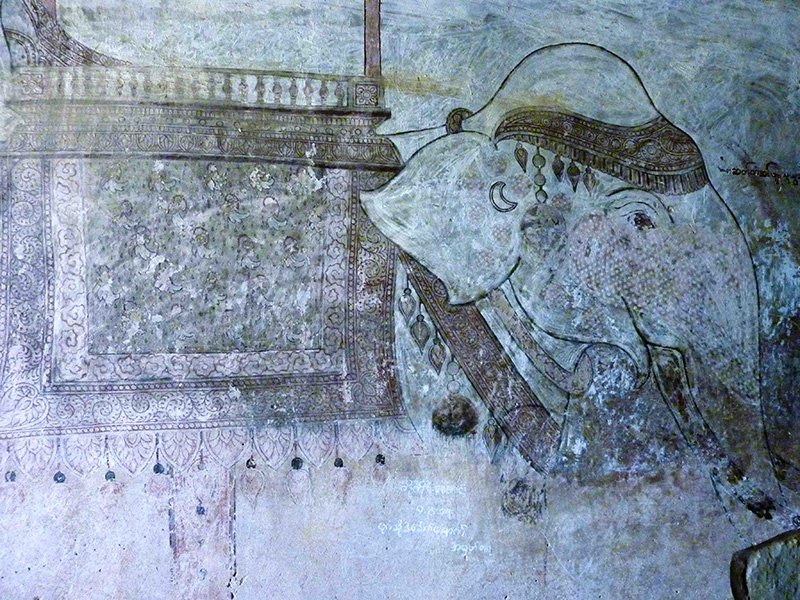
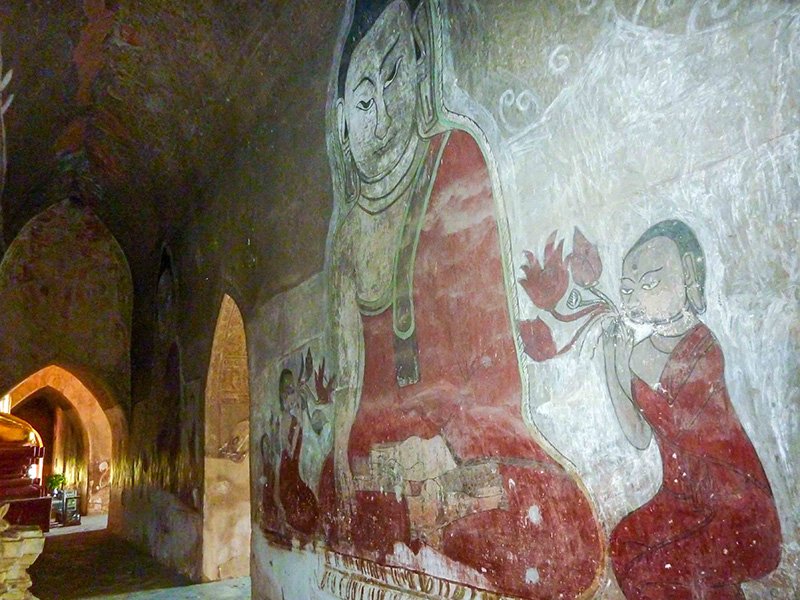
Ogres (and tile insets)
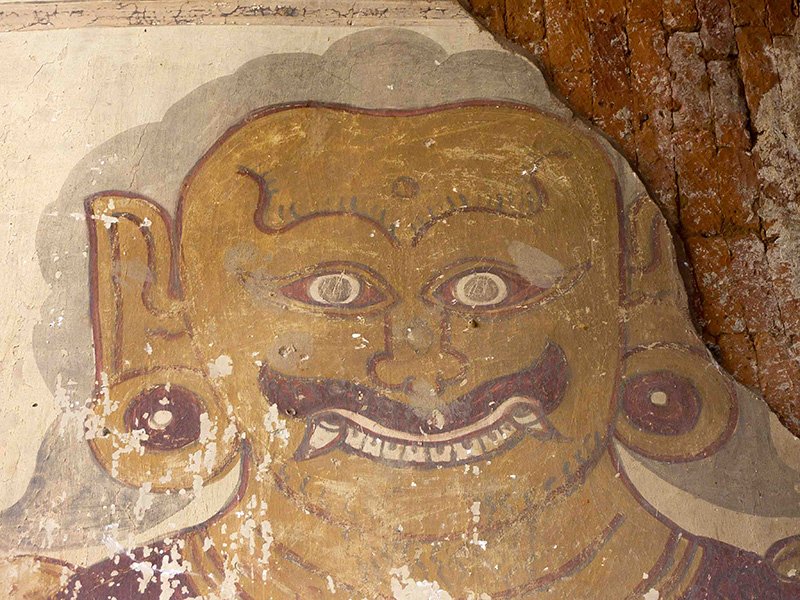

Buddhas


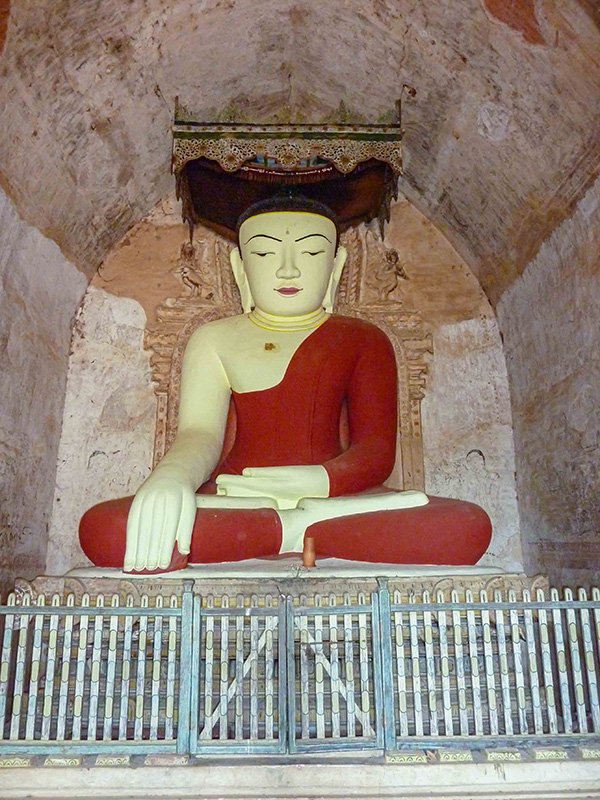

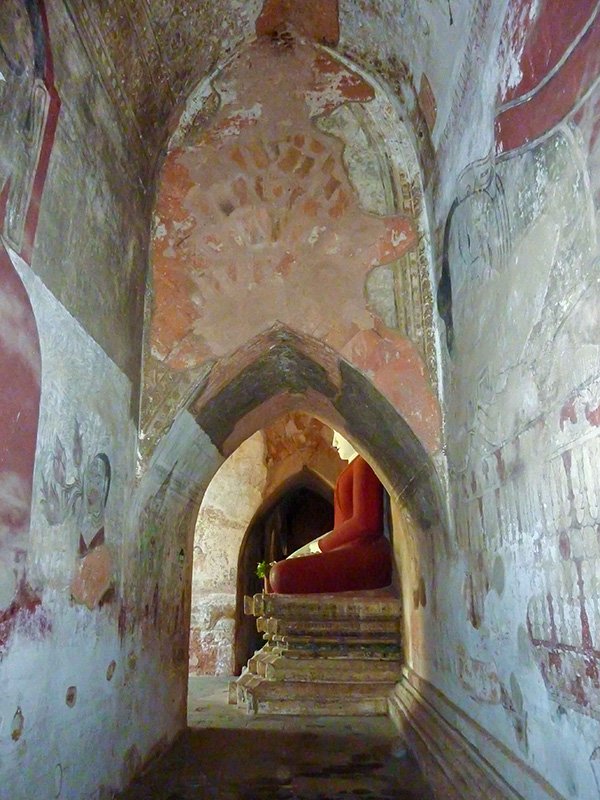
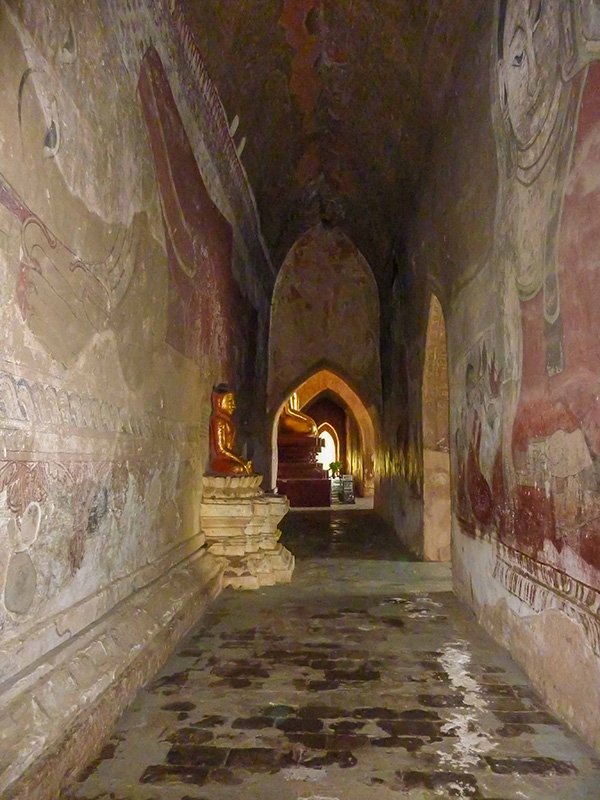

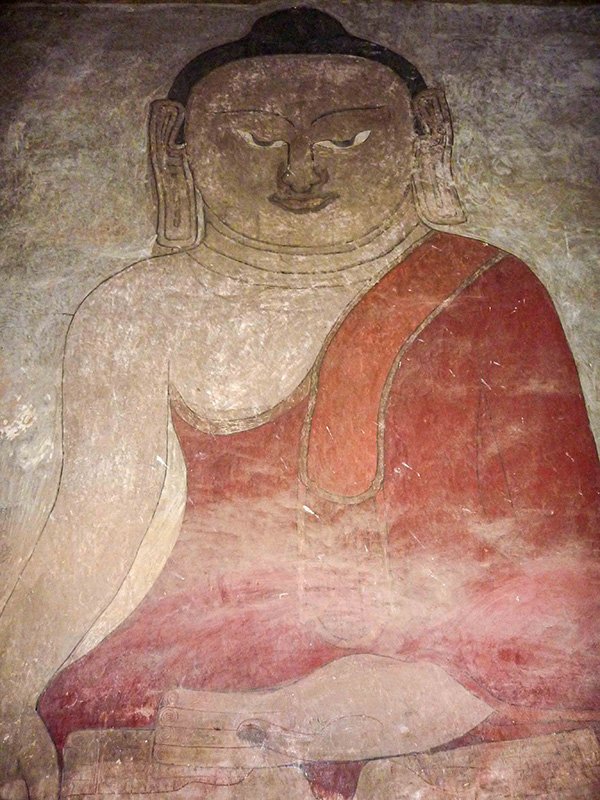
References:
Ancient Pagan: Buddhist Plain of Merit, Donald Stadtner, River Books, 2013
Pagan: Art and Architecture of Old Burma, Paul Strachan, Kiscadale Publications, 1989
Guide to Bagan Monuments by Min Bu Aung Kyaing, U Zaw Min Aye (Zaw Press), 2007
Inventory Of Monuments In Bagan, Pierre Pichard, UNESCO, 8 volumes, 1992-2001
